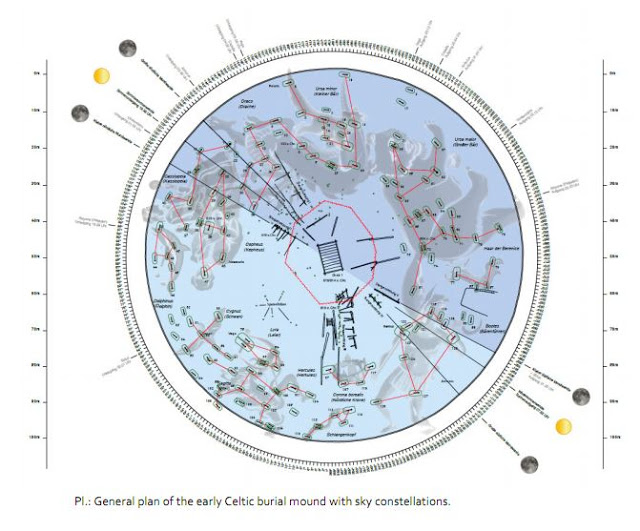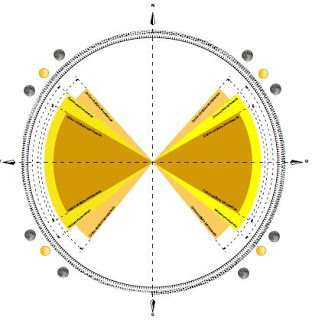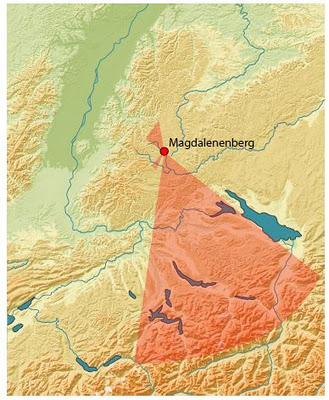

| Visitors Now: | |
| Total Visits: | |
| Total Stories: |

| Story Views | |
| Now: | |
| Last Hour: | |
| Last 24 Hours: | |
| Total: | |
Celtic “Stonehenge” Discovered In The Black Forest, Oriented To Lunar Standstills
Whereas Stonehenge was orientated towards the sun, the more then 100 meter width burial mound of Magdalenenberg was focused towards the moon. The builders positioned long rows of wooden posts in the burial mound to be able to focus on the Lunar Standstills. These Lunar Standstills happen every 18,6 year and were the ‘corner stones’ of the Celtic calendar.
The position of the burials at Magdeleneberg represents a constellation pattern which can be seen between Midwinter and Midsummer. With the help of special computer programs, Dr. Allard Mees, researcher at the Römisch-Germanischen Zentralmuseum, could reconstruct the position of the sky constellations in the early Celtic period and following from that those which were visible at Midsummer. This archaeo-astronomic research resulted in a date of Midsummer 618 BC, which makes it the earliest and most complete example of a Celtic calendar focused on the moon.
Julius Caesar reported in his war commentaries about the moon based calendar of the Celtic culture. Following his conquest of Gaul and the destruction of the Gallic culture, these types of calendar were completely forgotten in Europe. With the Romans, a sun based calendar was adopted throughout Europe. The full dimensions of the lost Celtic calendar system have now come to light again in the monumental burial mound of Magdalenenberg.
Credit: Römisch-Germanisches Press Zentralmuseum at Mainz
Contacts and sources:
Römisch-Germanisches Zentralmuseum
Christina Nitzsche M.A. Dr. Allard Mees
Citation: A.W. Mees, Der Sternenhimmel von Magdalenenberg. Das Fürstengrab bei Villingen-Schwenningen – ein Kalenderwerk der Hallstattzeit. Jahrbuch Römisch-Germanisches Zentralmuseum 54 [Mainz 2007 (released 2011)] 217-264.
Read more at Nano Patents and Innovations
Source:





